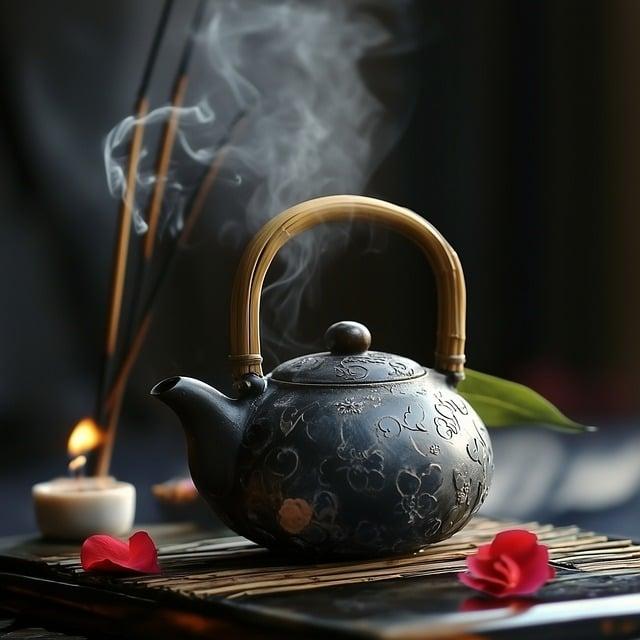In a quaint little town, the holiday spirit lingered long after Christmas. The townsfolk had a tradition: they would leave their decorations up until the first snowfall of the new year. One year, a curious child named Lily asked her grandmother why they waited. With a twinkle in her eye, Grandma replied, “It’s to hold onto the magic a little longer.” As the days passed, the lights twinkled against the winter sky, and the town glowed with warmth. When the snow finally fell, they gathered to take down the decorations, cherishing the memories made, knowing the magic would return next year.
Table of Contents
- The Tradition of Post-Christmas Decor: Understanding the Timing
- Cultural Variations in Holiday Decoration Durations
- Practical Tips for Transitioning from Festive to Everyday Decor
- Embracing Minimalism: When Less is More After the Holidays
- Q&A

The Tradition of Post-Christmas Decor: Understanding the Timing
The period following Christmas is often a time of reflection and celebration, where the remnants of holiday cheer linger in our homes. Traditionally, many families choose to keep their decorations up until the New Year, allowing the festive spirit to extend beyond December 25th. This practice is rooted in various cultural beliefs, where the days between Christmas and New Year’s are seen as a time for gathering, gratitude, and preparation for the year ahead. Some even believe that leaving decorations up can invite good fortune and prosperity into the coming year.
As the calendar turns, the timing for taking down decorations varies widely among individuals and cultures. While some may opt to dismantle their festive displays on January 1st, others wait until the Feast of the Epiphany on January 6th, marking the end of the Christmas season in many Christian traditions. Factors influencing this decision include:
- Personal Preference: Some enjoy the lingering beauty of lights and ornaments.
- Cultural Traditions: Different cultures have unique customs regarding when to remove decorations.
- Practical Considerations: Busy schedules may dictate when one can take the time to pack away decorations.

Cultural Variations in Holiday Decoration Durations
Across the globe, the duration for which holiday decorations remain displayed varies significantly, influenced by cultural traditions and local customs. In many Western countries, it is common for Christmas decorations to be taken down shortly after the New Year, often by January 6th, which is celebrated as Epiphany or Three Kings’ Day. This practice symbolizes the end of the Christmas season, marking the arrival of the Magi. However, in some cultures, the decorations may linger longer, reflecting a desire to extend the festive spirit. For instance, in parts of Italy, it is customary to keep the nativity scene up until February 2nd, known as Candlemas, celebrating the presentation of Jesus at the temple.
Conversely, in certain regions, the decorations are not just a seasonal affair but a year-round celebration of cultural identity. In Mexico, for example, the vibrant decorations associated with Christmas often blend into the festivities of Día de los Reyes (Three Kings Day) and even into the colorful celebrations of Día de Muertos (Day of the Dead) in November. This intertwining of holidays creates a rich tapestry of decorations that can last for months. Similarly, in Scandinavian countries, the tradition of keeping lights and ornaments up throughout the dark winter months serves both a practical and aesthetic purpose, brightening the long nights and fostering a sense of community and warmth during the cold season.

Practical Tips for Transitioning from Festive to Everyday Decor
As the festive season winds down, it’s time to gracefully transition your home from holiday cheer to a more subdued everyday aesthetic. Start by removing the most overtly festive items, such as Christmas trees, wreaths, and string lights. This will immediately create a sense of calm and open up your space. Consider replacing these with seasonal decor that reflects the current time of year, such as winter-themed accents or neutral-toned pieces that can seamlessly blend into your everyday decor. Items like cozy throws, soft pillows, and simple centerpieces can help maintain a warm atmosphere without the holiday overload.
Next, focus on rearranging your existing decor to breathe new life into your space. Take down any holiday-specific decorations and replace them with items that evoke a sense of comfort and tranquility. Incorporate natural elements like branches, pinecones, or even fresh flowers to keep the winter vibe alive while steering clear of holiday motifs. Additionally, consider using subtle lighting to create a cozy ambiance; table lamps and candles can provide warmth without the festive sparkle. By thoughtfully curating your decor, you can create a harmonious environment that feels inviting and fresh, perfect for the new year ahead.

Embracing Minimalism: When Less is More After the Holidays
As the holiday season comes to a close, many find themselves surrounded by a plethora of decorations that once brought joy but now feel overwhelming. This is the perfect opportunity to embrace a more minimalist approach, allowing for a refreshing transition into the new year. By carefully selecting which decorations to keep and which to let go, you can create a serene environment that fosters clarity and peace. Consider the following:
- Evaluate Sentimental Value: Keep only those items that hold significant memories or emotional connections.
- Choose Quality Over Quantity: Invest in a few timeless pieces that can be reused year after year.
- Incorporate Natural Elements: Use seasonal greenery or simple ornaments that can blend seamlessly into your everyday decor.
Adopting a minimalist mindset not only simplifies your space but also enhances your overall well-being. By reducing clutter, you create a more inviting atmosphere that encourages relaxation and mindfulness. As you pack away the holiday cheer, consider these strategies:
- Set a Deadline: Decide on a specific date to take down decorations, allowing for a clean break from the holiday season.
- Involve the Family: Make the process a fun activity by involving everyone in the decision-making and packing.
- Reflect on the Season: Take a moment to appreciate the joy the decorations brought, and then let them go with gratitude.
Q&A
-
When should I take down my Christmas decorations?
Traditionally, many people take down their decorations by January 6th, known as the Feast of the Epiphany. However, some prefer to keep them up until the end of the month for a longer festive feel.
-
Is there a specific date for taking down decorations?
While January 6th is a common date, others choose to follow the “12 days of Christmas” tradition, which ends on January 5th. Ultimately, the decision is personal and can vary based on individual preference.
-
Can I leave my decorations up longer?
Absolutely! Many people enjoy the holiday spirit and choose to keep their decorations up until Valentine’s Day or even longer. It’s all about what makes you feel festive!
-
What are some tips for taking down decorations?
Consider these tips:
- Start with the tree and lights, then move to smaller decorations.
- Organize decorations by type or room for easier setup next year.
- Take photos of your displays for inspiration next holiday season.
As the holiday season winds down, the question of when to take down Christmas decorations lingers. Whether you choose to embrace the lingering cheer or usher in the new year with a fresh start, the spirit of the season can remain in your heart long after the lights dim.




